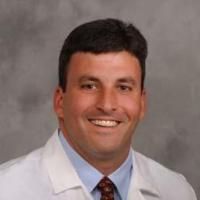Experience with intrawound vancomycin powder for spinal deformity surgery.
Date
2014-01
Journal Title
Journal ISSN
Volume Title
Repository Usage Stats
views
downloads
Citation Stats
Attention Stats
Abstract
Study design
Retrospective cohort study.Objective
To evaluate the ability of local vancomycin powder to prevent deep wound infection after thoracolumbar and lumbar spinal fusion for open deformity cases.Summary of background data
Recent studies report that local delivery of vancomycin powder is associated with a decrease in spinal surgical site infection (SSI). This study compares deformity fusion cases before and after the routine application of spinal vancomycin powder.Methods
Posterior spinal deformity surgical procedures by a single institution were reviewed from January 2011 to April 2013. Routine application of vancomycin powder started in April 2012. Inclusion criteria included adult patients who underwent posterior fusion for deformity pathologies, including spondylolisthesis, kyphosis, sagittal imbalance, and scoliosis. Each cohort's baseline characteristics including infection risk factors, operative data, and rates of wound infection were compared. Associations between infection and vancomycin powder, with and without propensity score adjustment for risk factors were determined using logistic regression.Results
A total of 306 patients were included in the study. All measured baseline and operative variables were statistically similar between untreated (n = 150) and those who received vancomycin powder (n = 156). No significant change in deep wound infection rate was seen between the control (5.3%) and intervention group (5.1%, P = 0.936). Logistic regression with and without propensity score adjusted for risk factors demonstrated that the use of vancomycin powder did not impact the development of SSI (odds ratio [95% confidence interval]: 1.01 [0.36-2.79], P = 0.9910) and (odds ratio [95% confidence interval]: 0.87 [0.31-2.42], P = 0.7876), respectively.Conclusion
The local application of powdered vancomycin was not associated with a significant difference in the rate of deep SSI after spinal deformity surgery, and other treatment modalities are necessary to limit infection for this high-risk group. This study is in contrary to prior studies, which have reported a decrease in SSI with vancomycin powder.Level of evidence
2.Type
Department
Description
Provenance
Subjects
Citation
Permalink
Published Version (Please cite this version)
Publication Info
Martin, Joel R, Owoicho Adogwa, Christopher R Brown, Carlos A Bagley, William J Richardson, Shivanand P Lad, Maragatha Kuchibhatla, Oren N Gottfried, et al. (2014). Experience with intrawound vancomycin powder for spinal deformity surgery. Spine, 39(2). pp. 177–184. 10.1097/brs.0000000000000071 Retrieved from https://hdl.handle.net/10161/31389.
This is constructed from limited available data and may be imprecise. To cite this article, please review & use the official citation provided by the journal.
Collections
Scholars@Duke

Christopher Robert Brown
As an orthopaedic specialist and spine surgeon, I am committed to providing the best possible outcome for my patients with the least invasive surgery possible. I treat patients using the latest minimally invasive surgical techniques. Among the conditions I see in my patients are cervical radiculopathy and myelopathy, and traumatic spine injuries. Among the procedures I perform are complex cervical reconstruction, disc replacement surgery, minimally invasive scoliosis surgery, motion preservation spine surgery, and metastatic and tumor surgery.

Shivanand Lad
Dr. Nandan Lad is a neurosurgeon, scientist, and entrepreneur and Professor and Vice Chair of Innovation for Duke Neurosurgery. He is Director of the Functional & Restorative Neuromodulation Program and the Duke NeuroInnovations Program, a systematic approach to innovation to large unmet clinical needs.
He completed his MD and PhD in Biochemistry at Chicago Medical School and his neurosurgical residency training at Stanford with fellowships in both Surgical Innovation and Functional Neurosurgery.
Neuromodulation; Neurorestoration; Bioengineering; Medical Device Design; Clinical Trials; Data Science; Health Outcomes.

Maragatha Kuchibhatla
Statistical research methodology, analysis of repeated measurements, latent growth curve models, latent class growth models, classification and regression trees,
designing clinical trials, designing clinical trials in psychiatry -- both treatment and non-treatment
trials in various comorbid populations.

Oren N Gottfried
I specialize in the surgical management of all complex cervical, thoracic, lumbar, or sacral spinal diseases by using minimally invasive as well as standard approaches for arthritis or degenerative disease, deformity, tumors, and trauma. I have a special interest in the treatment of thoracolumbar deformities, occipital-cervical problems, and in helping patients with complex spinal issues from previously unsuccessful surgery or recurrent disease.I listen to my patients to understand their symptoms and experiences so I can provide them with the information and education they need to manage their disease. I make sure my patients understand their treatment options, and what will work best for their individual condition. I treat all my patients with care and concern – just as I would treat my family. I am available to address my patients' concerns before and after surgery. I aim to improve surgical outcomes for my patients and care of all spine patients with active research evaluating clinical and radiological results after spine surgery with multiple prospective databases. I am particularly interested in prevention of spinal deformity, infections, complications, and recurrent spinal disease. Also, I study whether patient specific variables including pelvic/sacral anatomy and sagittal spinal balance predict complications from spine surgery.
Unless otherwise indicated, scholarly articles published by Duke faculty members are made available here with a CC-BY-NC (Creative Commons Attribution Non-Commercial) license, as enabled by the Duke Open Access Policy. If you wish to use the materials in ways not already permitted under CC-BY-NC, please consult the copyright owner. Other materials are made available here through the author’s grant of a non-exclusive license to make their work openly accessible.
